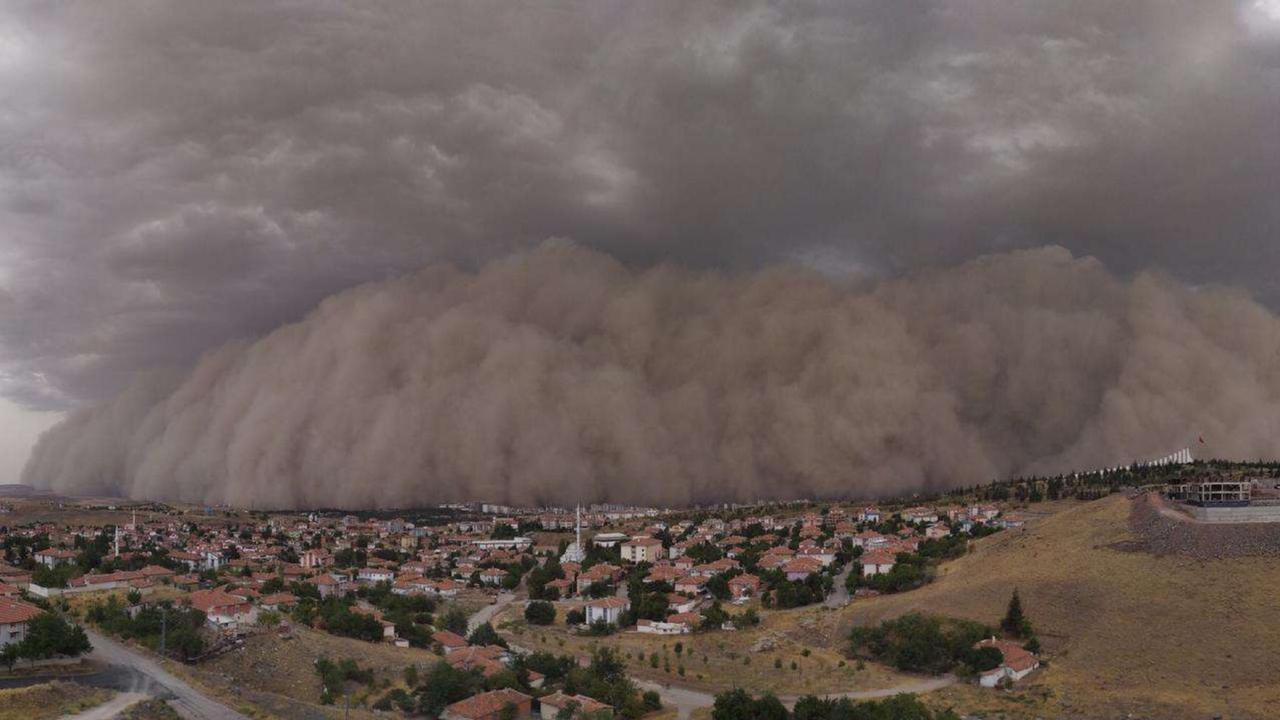
Türkiye has launched a scientific and data-driven response to allegations from Iran that Turkish dams on the Euphrates and Tigris rivers are responsible for the surge in dust and sandstorms affecting the region.
A recent report reveals that artificial intelligence (AI) analysis found no dust storms originating from Turkish territory, challenging accusations that Türkiye’s dam infrastructure contributes to environmental degradation in neighboring countries.
The findings are detailed in the Turkish Agriculture and Forestry Ministry’s 2024 Investment Monitoring and Evaluation Report.
The report outlines efforts to combat the growing impact of global climate change, particularly the rise in frequency and intensity of dust and sandstorms in arid and semi-arid regions.
A key initiative highlighted is the “Study of Changes in Dust and Sand Source Areas in the Euphrates-Tigris Basin” project, which has been allocated a budget of 3.5 million Turkish Liras (around $92,000).
The project examined the transformation of dust and sand source regions using a multidimensional approach, incorporating land analysis, atmospheric modeling and socio-cultural evaluations.
Dust and sandstorms, though natural phenomena, often have cross-border consequences and can affect public health, transportation, agriculture and infrastructure, the report noted.
However, uncertainties persist about their intensity, frequency, origins and forecasting methods. The report criticizes the lack of comprehensive scientific studies on the subject, stating that existing research often falls short of resolving these ambiguities.
Iran, according to the report, has exploited these uncertainties to claim that dams constructed by Türkiye have contributed to the emergence of new dust-generating areas in Syria and Iraq. In response, Türkiye’s latest research aims to provide a scientifically sound basis to refute such allegations, both current and future.
The Euphrates and Tigris rivers flow through Türkiye, Syria, Iraq and Iran. On the Turkish side, five major dams — Keban, Karakaya, Atatürk, Birecik and Karakamış — span the Euphrates. The Tigris hosts six additional dams: Devegeçidi, Ilısu, Batman, Dicle, Kralkızı and Garzan.
The study utilized data from the General Directorate for Combating Desertification and Erosion to analyze environmental changes from 2001 to 2019. The research found that most land degradation in Iraq, Syria and Iran during this period occurred not near dams, but in abandoned farmlands and expanding desert zones.
Conversely, areas showing signs of “regreening” were primarily located where the Euphrates and Tigris rivers converge, refuting claims that Türkiye’s dam infrastructure contributed to increasing dust and sand storms.